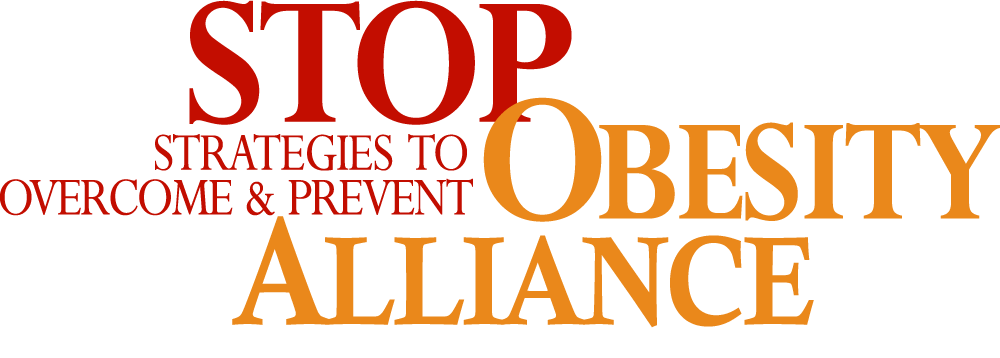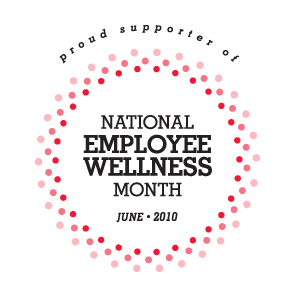Washington, D.C. – Sixty-two percent of American businesses and nearly 85 percent of employees say the workplace must play a leadership role in creating a healthier workforce and helping to curb rising healthcare costs, according to a new survey released today by Virgin HealthMiles, a leading provider of employee wellness programs that pay people to get active.
Even with the enactment of federal healthcare reform, 85 percent of U.S. companies surveyed believe the newly-enacted legislation alone won’t make for a healthier America, but that other measures must be put in place to curb rising healthcare costs. Additionally, employers and employees alike agree the workplace should play a prominent role in encouraging more healthful lifestyle behaviors among the workforce, and that incentives are a powerful motivator in doing so.
The survey was released to mark the start of June’s National Employee Wellness Month. This initiative, now in its second year, was created by Virgin HealthMiles with support from the Strategies to Overcome and Prevent (STOP) Obesity Alliance and the Institute for Health and Productivity Management (IHPM).
“Between rising healthcare costs and The Milken Institute’s estimated $1 trillion lost economic output associated with chronic health problems, American businesses are facing an economic crisis of epic proportions if more isn’t done to create a healthier workforce,” said Chris Boyce, CEO of Virgin HealthMiles. “Responses from this survey support our experience that organizations recognize the importance of helping employees live healthier lifestyles. We’re excited that more than 80 companies and over 20,000 of their employees have lent their support to this year’s National Employee Wellness Month. They serve as tremendous examples that other organizations can learn from to improve workforce health and better control healthcare costs.”
“The STOP Obesity Alliance views the workplace as another area where we can work together to manage and support efforts to reduce weight and weight-related chronic diseases,” said Christine Ferguson, director of the STOP Obesity Alliance and research professor, The George Washington University School of Public Health and Health Services. “We are delighted to support National Employee Wellness Month again.”
“The employers on our Business Leadership Council represent the leading edge of Corporate America in valuing the health of their employees as an asset, and are demonstrating this by investing in that asset by encouraging healthy behaviors and establishing supportive workplace cultures of health,” said Sean Sullivan, President and CEO of the Institute for Health and Productivity Management. “By being proactive and taking a leadership role in improving the health of their workforces, these companies already are showing results in improved productivity and reduced healthcare costs, which have a direct impact on their financial performance.”
Additional Key Survey Findings
- Mixed Perceptions Towards Impact of Healthcare Reform on Wellness: More than 43 percent of employers said they “closely watched” the outcome of healthcare reform before shaping their corporate wellness/employee health initiatives, while nearly 35 percent indicated they “didn’t wait” and had already implemented such initiatives.
- Multiple Drivers Pushing Double Digit Spikes in Healthcare Costs: Forty percent of companies surveyed indicate their healthcare costs have risen between six and 10 percent in the past year, with nearly 35 percent reporting a spike of more than 11 percent. Top drivers of cost increases included rising medical inflation, pharmaceutical and hospital costs, and an overall decline in the health of the general workforce as a result of a rise in chronic conditions.
- Employees Want Employers to Take an Active Role in Creating a Healthy Workplace: More than 62 percent of the 1,012 employer respondents and nearly 85 percent of the 1,926 employee respondents believe an employer has a responsibility to take a leadership role in encouraging and promoting workplace health.
- Multiple Strategies Tapped to Lower Healthcare Costs: Of the 8.5 percent of companies that reported a decrease in annual healthcare costs, eliminating coverage, moving to different healthcare plans, implementation of effective employee wellness programs and cost shifting to employees were the top drivers.
- Employees Take Health Cues from Supervisors and Co-Workers: Nearly three-quarters of employees surveyed said they would be more willing to adopt healthful lifestyle behaviors if their colleagues were doing so; 60 percent said they would adopt such behaviors if company executives were leading by example.
- Flexibility, Financial Incentives and Goal Tracking Key to Employee Commitment to Wellness: When asked which elements keep them on track towards improved wellness, top responses included program flexibility, financial rewards and the ability to set goals and track personal progress.
Organizations and Their Employees Share the Benefits of Workplace Wellness
“We believe making wellness programs accessible at work really helps with generating enthusiasm and keeping it going,” said Reshma Patel, associate manager for compensation, benefits and systems for the American Diabetes Association. “We now have employees who liken their pedometers to their cell phone: they can’t live without them. They weigh themselves or check their heart-rate even when they they’ve maxed out on cash incentives. At the end of the day, we feel we have a successful one-stop wellness program for all our employees.”
“I’ve been in the healthcare business for 25 years and implementing creative wellness programs by using technology as a facilitator really seems to work,” said Jodi Fuller, global benefits director for MWV. “It has broad appeal, is a simple to use program and is fun. We anticipate that every dollar invested will save us two dollars in the next five-year period, and our wellness program results will translate to lower healthcare claims, increased health and productivity among the workforce and lower overall healthcare costs.”
The survey was conducted April 14-29, 2010, via email. The employer portion of the survey was conducted by Workforce Management magazine drawing from a list of its subscribers, along with advisory company members of the Institute for Health and Productivity Management and Virgin HealthMiles clients; a total of 1,012 employers responded. The employee survey was completed by 1,926 Virgin HealthMiles members. An executive summary of the survey results and more information on National Employee Wellness Month can be found at: www.nationalemployeewellnessmonth.com.
Creating Workplace Wellness Programs that Work
While many companies offer some sort of wellness program, according to a recent study from Business Finance magazine, two-thirds of these programs fail because employees are not engaged or adequately motivated. The National Employee Wellness Month website offers numerous ideas that have successfully motivated employees to participate in wellness programs and achieve meaningful results.
For instance, Memphis-based First Horizon National Corporation, a leading financial services company recognized as one of the nation’s best employers by AARP and Working Mother magazines, offers an activity-based program to its 5,500 employees across dispersed locations. The program’s measurement and accountability enables the company to incentivize employees with up to $500 per year for reaching key activity and health milestones. The company also hosts a national walk day, sponsors employees’ participation in philanthropic events such as Race for the Cure, and offers motivational guest speaker and nutrition programs to teach employees how good nutrition complements physical activity as part of the wellness equation. First Horizon’s program now boasts a 42 percent participation rate, significantly higher than single-digit industry standards.
New Orleans-based Ochsner Health System encourages employees who have enjoyed wellness successes to share their stories with colleagues. Ochsner’s Beatriz Maldonado created a presentation, “146 Pounds Lost and Counting: Lessons from My Weight Loss Journey” for Ochsner’s “Hello Health” seminar series. Nearly 600 employees attended her speech in person or by teleconference.
Additional Tips to Create Healthier Workplaces
- Ask employees to submit wellness stories; recognize employees who have persevered and succeeded in improving their health
- Hold “healthy brown bag lunches” with guest speakers on fitness, nutrition and healthy living
- Organize lunchtime walking groups
- Institute a “walk and talk” program where small meetings are held while walking
- Hang maps detailing paths around the office conducive for walking during lunch breaks; add distances (and calories burned from those distances), or share sites like www.mapmywalk.com so employees can easily track how far they’re walking
- Allow employees to wear sneakers/running shoes during work for the month (encourage management to do the same)
- Promote National Employee Wellness month in paycheck inserts; ask employees to place those inserts in their work areas to remind them to get active
- Encourage employees to pack healthy snacks from home as an alternative to vending machines
- Bring in scales, blood pressure monitors and other measurement tools for employees to benchmark their health and progress
- Create a “farthest spot” daily award for the employee who parks farthest from the building
- Create a 1-week challenge asking employees to take the stairs vs. the elevator
- Hang signs by the elevator reminding employees it’s National Employee Wellness Month; encourage them to take the stairs instead
About National Employee Wellness Month
National Employee Wellness Month is an annual initiative designed to raise public awareness about the critical role employers play in workplace wellness and how preventive, healthy employee behavior can improve health and help to combat our nation’s rising healthcare costs.
About Virgin HealthMiles, the STOP Obesity Alliance and the Institute for Health and Productivity Management
Virgin HealthMiles is an industry leading provider of employee health and activity programs that pay people to get active. Its award-winning, Pay-for-Prevention™ approach, based on physical activity and healthy lifestyle change, attracts an average of 40 percent of employees who participate in the program regularly, which helps organizations reduce medical costs and improve employee productivity and satisfaction.
The Strategies to Overcome and Prevent (STOP) Obesity Alliance is a collaboration of consumer, provider, government, labor, business, health insurers and quality-of-care organizations united to drive innovative and practical strategies that combat obesity. The Strategies to Overcome and Prevent (STOP) Obesity Alliance receives funding from founding sponsor, Sanofi-Aventis U.S. LLC, and supporting sponsors, Allergan, Inc. and Amylin Pharmaceuticals, Inc.
The Institute for Health and Productivity Management (IHPM) is a global research and development enterprise devoted to establishing the value of health in the workplace as a human capital investment that improves business performance. IHPM holds conferences around the world, conducts Academies, publishes a quarterly magazine and a peer-reviewed journal, and conducts field projects – including several on obesity and related cardio-metabolic health risks. It works with all the stakeholders – employers and their employees, health service providers, health plans, pharmaceutical manufacturers and governments – to advance health and productivity management as a strategy for economic competitiveness.


